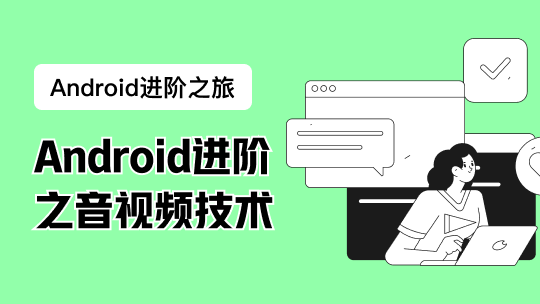##鸿蒙开发能力 ##HarmonyOS SDK应用服务##鸿蒙金融类应用 (金融理财#
一、TEE是什么?
1、TEE的定义: 可信执行环境(Trusted Execution Environment),简称TEE,是存在于智能手机、平板或任意移动设备主处理器中的一个安全区域,确保各种敏感数据在一个可信环境中被存储、处理和受到保护。 2、TEE的作用 简单来说,TEE构建一个隔离的安全执行环境。该环境具备独立的计算和存储能力,能确保在其中运行的程序和数据受到严格保护,即使主系统被GJ或篡改,TEE内的内容也能保持安全。 TEE为授权安全软件,也称为“可信应用”提供一个安全的执行环境,通过实施保护、保密性、完整性和数据访问权限确保端到端的安全。 3、TEE的能力归属: TEE在鸿蒙系统中以Kit的形式,提供给App使用。在Device Security Kit中包括应用设备状态检测、安全检测、可信应用服务、业务风险检测能力。 4、硬件级安全保障 依赖芯片级的安全能力(如ARM的TrustZone、Intel的SGX等技术),通过硬件隔离机制确保TEE的安全性,降低软件层面被GJ的风险。 5、 与鸿蒙系统深度集成 适配鸿蒙的微内核架构和分布式特性,可在多设备(如手机、智能手表、智能家居设备)之间实现安全能力的协同,例如在分布式场景下统一管理用户身份和数据安全。 6、动态信任链机制 从系统启动阶段就建立可信根,通过信任链传递确保TEE环境的完整性,防止启动过程中被恶意篡改。 7、 移动支付与金融安全 在进行扫码支付、银行卡信息输入等操作时,鸿蒙TEE可保护支付密钥和交易数据,防止被恶意软件窃取,类似传统手机中TEE用于保护银联闪付等功能。 8、生物特征识别 存储和处理指纹、人脸等生物特征数据,确保解锁、支付等场景中生物信息的安全,例如手机解锁时,生物特征的比对过程在TEE中完成。 9、 数字版权管理(DRM) 保护视频、音乐等数字内容的版权,确保只有授权设备和用户才能播放加密的媒体文件,防止盗版内容传播。 10、 企业级安全应用 为企业提供安全的身份认证、数据加密传输等功能,例如在鸿蒙平板或笔记本中,TEE可保护企业机密文件和远程办公的安全连接。
二、如何使用TEE? 目前提供可信应用服务,例如:安全摄像头场景,安全地址位置场景,安全图像压缩和裁剪场景。 【从API12开始,开发者需要开通可信应用服务才可以正常使用接口,否则调用接口会抛出异常,已上架的应用需要开通服务后重新上架。】 1、首先我们需要给App开通可信应用服务: 默认在AGC平台是没有该设置入门。需要App通过白名单审核,审核通过后方可开通可信应用服务。 说明。 开通“可信应用服务”需要先申请进入允许清单,请将Developer ID、公司名称、应用名称、申请使用的服务和使用该服务的场景,发送到agconnect@huawei.com。AGC运营将审核相关材料,通过后将为您配置受限开放服务使用的名单,审核周期为1-3个工作日,请耐心等待。 可信应用服务:点击“可信应用服务”右侧的按钮,接入“可信应用服务”:
2、可信服务调用流程: 我们以为安全相机为例讲解:
import { camera } from '@kit.CameraKit'; import { image } from '@kit.ImageKit';
@Entry @Component struct SecureCameraDemo { private cameraManager: camera.CameraManager = camera.getCameraManager(); private secureCamera: camera.CameraDevice | null = null; private cameraInput: camera.CameraInput | null = null; private previewOutput: camera.PreviewOutput | null = null; private secureOutput: camera.PreviewOutput | null = null; private secureSession: camera.SecureSession | null = null; private imageReceiver: image.ImageReceiver | null = null; private previewProfile: camera.Profile | null = null; private secureCameraSerialNumber: bigint | null = null; private previewSurfaceId: string = '';
aboutToAppear() { this.initSecureCamera(); }
aboutToDisappear() { this.releaseResources(); }
// 初始化安全相机 async initSecureCamera() { try { // 选择支持安全相机的设备 await this.selectSecureCameraDevice(); if (!this.secureCamera) { console.error('未找到支持安全相机的设备'); return; }
// 查询相机设备在安全模式下支持的输出能力
await this.getSecureCameraOutputCapability();
if (!this.previewProfile) {
console.error('未获取到支持的预览配置');
return;
}
// 创建设备输入输出
await this.createInputAndOutputs();
// 打开安全设备
await this.openSecureCamera();
// 创建安全相机会话,配流启流
await this.openSecureSession();
// 注册安全数据流回调
this.registerSecureDataCallback();
} catch (error) {
console.error(`初始化安全相机失败: ${JSON.stringify(error)}`);
}}
// 选择支持安全相机的设备 async selectSecureCameraDevice() { const cameraArray = await this.cameraManager.getSupportedCameras(); for (const cameraDevice of cameraArray) { if (await this.isSecureCamera(cameraDevice)) { this.secureCamera = cameraDevice; console.info('找到支持安全相机的设备'); break; } } }
// 判断设备是否支持安全相机
async isSecureCamera(cameraDevice: camera.CameraDevice): Promise
// 查询相机设备在安全模式下支持的输出能力 async getSecureCameraOutputCapability() { if (!this.secureCamera) return;
const outputCap = await this.cameraManager.getSupportedOutputCapability(
this.secureCamera,
camera.SceneMode.SECURE_PHOTO
);
// 选择推荐的预览分辨率 640*480
this.previewProfile = outputCap.previewProfiles.find(
profile => profile.size.width === 640 && profile.size.height === 480
);
// 如果没有找到 640*480 的分辨率,选择第一个可用的
if (!this.previewProfile && outputCap.previewProfiles.length > 0) {
this.previewProfile = outputCap.previewProfiles[0];
}}
// 创建设备输入输出 async createInputAndOutputs() { if (!this.secureCamera || !this.previewProfile) return;
// 创建输入流
this.cameraInput = await this.cameraManager.createCameraInput(this.secureCamera);
// 创建普通预览输出流
this.previewSurfaceId = this.createPreviewSurface();
this.previewOutput = await this.cameraManager.createPreviewOutput(
this.previewProfile,
this.previewSurfaceId
);
// 创建安全数据输出流
this.imageReceiver = image.createImageReceiver(
{ width: this.previewProfile.size.width, height: this.previewProfile.size.height },
image.ImageFormat.JPEG,
8
);
const secureSurfaceId = await this.imageReceiver.getReceivingSurfaceId();
this.secureOutput = await this.cameraManager.createPreviewOutput(
this.previewProfile,
secureSurfaceId
);}
// 创建预览Surface createPreviewSurface(): string { // 这里需要实现创建预览Surface的逻辑 // 实际开发中可能需要使用鸿蒙的UI组件来创建预览Surface return 'previewSurfaceId'; }
// 打开安全设备 async openSecureCamera() { if (!this.cameraInput) return;
// 打开安全相机并获取序列号
this.secureCameraSerialNumber = await this.cameraInput.open(true);
console.info(`安全相机已打开,序列号: ${this.secureCameraSerialNumber}`);
// 使用序列号创建证明密钥和初始化证明会话
// 注意:这部分需要调用DeviceSecurity Kit的API,此处仅为示例
this.initializeAttestationSession(this.secureCameraSerialNumber);}
// 初始化证明会话(调用DeviceSecurity Kit)
initializeAttestationSession(serialNumber: bigint) {
// 实际开发中需要调用DeviceSecurity Kit的API
// 以下为示例代码,需要根据实际API进行调整
console.info(使用安全相机序列号 ${serialNumber} 初始化证明会话);
// const deviceSecurityKit = ...; // 获取DeviceSecurity Kit实例
// deviceSecurityKit.createAttestationKey(serialNumber);
// deviceSecurityKit.initializeAttestationSession(...);
}
// 创建安全相机会话,配流启流 async openSecureSession() { if (!this.cameraManager || !this.cameraInput || !this.previewOutput || !this.secureOutput) return;
try {
this.secureSession = await this.cameraManager.createSession(camera.SceneMode.SECURE_PHOTO);
if (!this.secureSession) {
console.error('创建安全会话失败');
return;
}
await this.secureSession.beginConfig();
await this.secureSession.addInput(this.cameraInput);
await this.secureSession.addOutput(this.previewOutput);
await this.secureSession.addOutput(this.secureOutput);
await this.secureSession.addSecureOutput(this.secureOutput); // 标记为安全输出
await this.secureSession.commitConfig();
await this.secureSession.start();
console.info('安全会话已启动');
} catch (error) {
console.error(`打开安全会话失败: ${JSON.stringify(error)}`);
}}
// 注册安全数据流回调 registerSecureDataCallback() { if (!this.imageReceiver) return;
this.imageReceiver.on('imageArrival', async () => {
try {
const img = await this.imageReceiver!.readNextImage();
const component = await img.getComponent(image.ComponentType.JPEG);
const buffer = component.byteBuffer;
// 将安全数据发送到服务器进行验证
this.sendSecureDataToServer(buffer);
// 处理完后释放图像资源
img.release();
} catch (error) {
console.error(`处理安全数据失败: ${JSON.stringify(error)}`);
}
});}
// 将安全数据发送到服务器进行验证
sendSecureDataToServer(buffer: ArrayBuffer) {
// 实际开发中需要实现将安全数据发送到服务器的逻辑
console.info(发送安全数据到服务器,数据大小: ${buffer.byteLength} 字节);
// 示例:使用fetch API发送数据
/*
fetch('https://your-server.com/verify-secure-data', {
method: 'POST',
body: buffer,
headers: {
'Content-Type': 'application/octet-stream',
'Secure-Camera-Serial': this.secureCameraSerialNumber?.toString() || ''
}
})
.then(response => response.json())
.then(result => {
console.info('服务器验证结果:', result);
})
.catch(error => {
console.error('发送安全数据失败:', error);
});
*/}
// 释放资源 async releaseResources() { try { // 停止会话 if (this.secureSession) { await this.secureSession.stop(); await this.secureSession.release(); this.secureSession = null; }
// 释放输出
if (this.previewOutput) {
await this.previewOutput.release();
this.previewOutput = null;
}
if (this.secureOutput) {
await this.secureOutput.release();
this.secureOutput = null;
}
// 释放输入
if (this.cameraInput) {
await this.cameraInput.release();
this.cameraInput = null;
}
// 释放图像接收器
if (this.imageReceiver) {
this.imageReceiver.release();
this.imageReceiver = null;
}
console.info('安全相机资源已释放');
} catch (error) {
console.error(`释放资源失败: ${JSON.stringify(error)}`);
}}
build() { Column() { Text('安全相机演示') .fontSize(20) .fontWeight(FontWeight.Bold) .margin({ top: 20, bottom: 20 })
// 这里可以添加预览界面组件
// 实际开发中需要根据鸿蒙的UI组件来实现预览显示
Text('安全相机预览区域')
.width('100%')
.height(300)
.backgroundColor('#CCCCCC')
.textAlign(TextAlign.Center)
.margin({ bottom: 20 })
Button('释放相机')
.onClick(() => {
this.releaseResources();
})
}
.width('100%')
.height('100%')
.padding(15) }
}
三、环境隔离的使用方法
综上所述,基于TEE的环境。我们将敏感信息加密后,放在TEE环境中,就可以做到最高的安全保护。
对用户的敏感数据(如生物特征信息、支付密码、加密密钥等)进行加密存储和处理,防止数据被未授权的程序或进程访问。
使用DeviceSecurity Kit访问TEE HarmonyOS提供了DeviceSecurity Kit来访问TEE功能,包括创建安全密钥、执行安全操作和存储敏感数据。主要步骤如下: 步骤1:导入依赖 import { deviceSecurity } from '@ohos.security.deviceSecurity'; 步骤2:获取TEE会话 async function getTEESession() { try { // 获取TEE服务实例 const teeService = await deviceSecurity.getTrustedExecutionEnvironmentService();
// 创建安全会话(根据实际需求选择合适的安全级别) const session = await teeService.createSession({ authType: deviceSecurity.AuthType.ALL, // 认证类型 authLevel: deviceSecurity.AuthLevel.SYSTEM, // 认证级别 userId: 0 // 用户ID });
return session; } catch (error) { console.error(
获取TEE会话失败: ${JSON.stringify(error)}); return null; } }在TEE中缓存数据 在TEE环境中缓存数据有两种主要方式:安全存储和安全内存。 方式1:安全存储(持久化缓存) 使用TrustedStorage接口将数据加密存储在TEE中: async function cacheDataSecurely(session: deviceSecurity.TrustedExecutionEnvironmentSession, key: string, data: string) { try { // 将数据转换为ArrayBuffer const dataBuffer = new TextEncoder().encode(data);
// 创建安全存储对象 const trustedStorage = await session.getTrustedStorage();
// 存储数据(自动加密) await trustedStorage.save(key, dataBuffer);
console.info(
数据已安全存储,键: ${key}); } catch (error) { console.error(安全存储失败: ${JSON.stringify(error)}); } } 方式2:安全内存(临时缓存) 使用TrustedMemory接口在TEE的安全内存中临时缓存数据: async function cacheDataInSecureMemory(session: deviceSecurity.TrustedExecutionEnvironmentSession, data: string) { try { // 将数据转换为ArrayBuffer const dataBuffer = new TextEncoder().encode(data);// 创建安全内存区域 const trustedMemory = await session.allocateTrustedMemory(dataBuffer.byteLength);
// 写入数据到安全内存 await trustedMemory.write(dataBuffer);
console.info('数据已缓存到安全内存'); return trustedMemory; } catch (error) { console.error(
安全内存缓存失败: ${JSON.stringify(error)}); return null; } }从TEE中读取缓存数据 根据存储方式的不同,读取数据的方法也不同: 读取安全存储数据 async function readSecurelyStoredData(session: deviceSecurity.TrustedExecutionEnvironmentSession, key: string) { try { const trustedStorage = await session.getTrustedStorage(); const dataBuffer = await trustedStorage.read(key);
// 将ArrayBuffer转换为字符串 const data = new TextDecoder().decode(dataBuffer); return data; } catch (error) { console.error(
读取安全存储数据失败: ${JSON.stringify(error)}); return null; } } 读取安全内存数据 async function readDataFromSecureMemory(trustedMemory: deviceSecurity.TrustedMemory) { try { const dataBuffer = await trustedMemory.read(); const data = new TextDecoder().decode(dataBuffer); return data; } catch (error) { console.error(读取安全内存数据失败: ${JSON.stringify(error)}); return null; } }释放资源 使用完毕后,需要释放TEE资源以确保安全性: async function releaseTEEResources(session: deviceSecurity.TrustedExecutionEnvironmentSession, trustedMemory?: deviceSecurity.TrustedMemory) { try { // 释放安全内存(如果有) if (trustedMemory) { await trustedMemory.release(); }
// 关闭会话 await session.close();
console.info('TEE资源已释放'); } catch (error) { console.error(
释放TEE资源失败: ${JSON.stringify(error)}); } }
完整示例 下面是一个完整的示例,演示如何在TEE中缓存和读取数据: import { deviceSecurity } from '@ohos.security.deviceSecurity';
async function demoTEECaching() { // 1. 获取TEE会话 const session = await getTEESession(); if (!session) return;
try { // 2. 缓存数据到安全存储 await cacheDataSecurely(session, 'sensitiveKey', '这是敏感数据');
// 3. 从安全存储读取数据
const storedData = await readSecurelyStoredData(session, 'sensitiveKey');
console.info(`从安全存储读取的数据: ${storedData}`);
// 4. 缓存数据到安全内存
const secureMemory = await cacheDataInSecureMemory(session, '临时敏感数据');
// 5. 从安全内存读取数据
if (secureMemory) {
const memoryData = await readDataFromSecureMemory(secureMemory);
console.info(`从安全内存读取的数据: ${memoryData}`);
} } catch (error) {
console.error(TEE数据缓存演示失败: ${JSON.stringify(error)});
} finally {
// 6. 释放资源
await releaseTEEResources(session);
}
}
注意事项
- 权限要求:使用TEE功能需要在config.json中声明相应权限: { "requestPermissions": [ { "name": "ohos.permission.USE_TRUSTED_ENVIRONMENT", "reason": "需要访问TEE环境" } ] }
- 数据大小限制:TEE的安全内存通常有限,不要存储过大的数据。
- 生命周期管理:确保在不需要时及时释放TEE资源,避免内存泄漏。
- 错误处理:TEE操作可能因硬件限制或安全策略失败,需要完善的错误处理。
- 兼容性:不同设备的TEE实现可能存在差异,建议进行充分测试。






